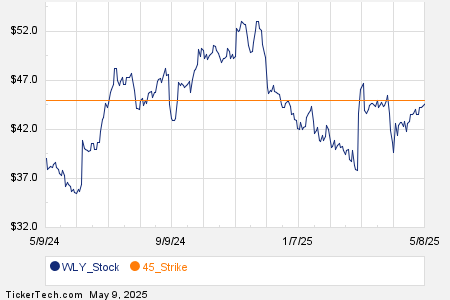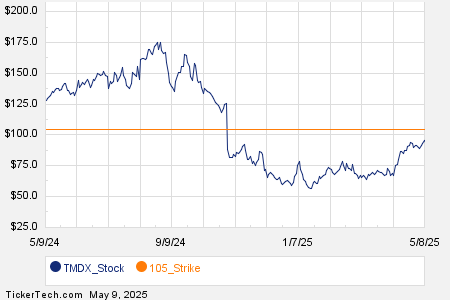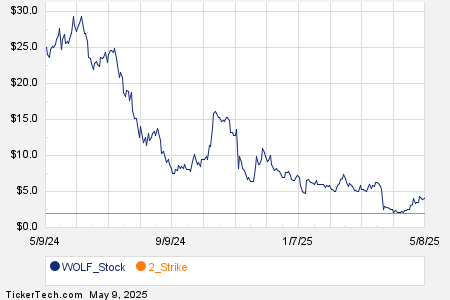Netflix Inc (NFLX) shares nosedived by approximately 8% following a stellar earnings report, triggering perplexity in the market. The viability of shorting OTM puts is an appealing option for generating income and capturing a cheaper entry point into the stock.
As of the morning hours on Friday, April 19, NFLX stock was hovering around $560 after the release of its Q1 results post-market closure on the previous day. The leading streaming service provider disclosed a surge in paid memberships from 260.28 million to 269.60 million in the preceding quarter, marking a 3.58% Q/Q increase and a robust 16% Y/Y growth.
Likewise, revenue escalated by 14.8% Y/Y and 6.08% to $9.37 billion in Q1. Of significant note is the staggering 34.67% leap in free cash flow (FCF) from $1.587 billion to $2.137 billion quarter-over-quarter.
Shifting Focus to Free Cash Flow
Netflix’s decision to cease forecasting membership growth numbers from 2025 onwards has raised eyebrows. The company rationalized that its focus has pivoted towards profitability and free cash flow as the key metrics propelling the stock rather than the volumetric aspects of memberships.
Despite the dissent from Wall Street, the consistent expansion of Netflix’s FCF margins underscores a critical long-term influence on the stock price compared to membership figures.
One tangible evidence of this trend can be observed in the Q1 FCF margin of 22.8%, surpassing the 17.9% FCF margin in Q4 of 2023. This boost is largely attributable to enhanced operating leverage, where increased revenues outpace rising operating costs, thus amplifying profitability and FCF with each incremental sale.
This robust performance is complemented by the company’s adept cost controls, exemplified by a notable drop in capex spending to $5.919 billion compared to the previous quarter, despite a plethora of new content offerings.
Projections and Potential Upside
Analysts foresee a revenue projection of $38.52 billion for the current fiscal year, with a further 12% surge to $43.2 billion anticipated for the subsequent year. Such growth trajectories could serve as catalysts propelling NFLX stock to higher levels.
Under the assumption of an average 28% FCF margin in the following year, Netflix’s FCF could scale to $12.1 billion. By applying a 3% FCF yield metric, this trajectory could lead to a market cap escalation to $403 billion, offering a 63% potential upside to reach $912.80 per share.
Even a conservative scenario with a 25% FCF margin may drive the market cap to $360 billion, signifying a 45.6% upsurge and a valuation of at least $815.36 per share.
Noteworthy consensus targets from various analysts affirm the undervalued status of NFLX stock, with an average price target of $634.58 per share, indicating a 13.3% upswing. Additionally, the AnaChart.com consensus projects a target of $639.35 per share, translating to a 12.4% potential rise.
Pricing Strategies in a Bearish Market
Given the current discounted valuation of NFLX stock, leveraging strategies like shorting out-of-the-money (OTM) puts provides an attractive means to capitalize on the stock’s latent potential.
For instance, analyzing the upcoming May 3 expiration option reveals the $550 strike price put options priced at $9.40. This setup offers a short seller an immediate yield of 1.709% ($9.40/$550.00).
By committing $55,000 in cash or margin with their brokerage, an investor can “Sell to Open” 1 put contract expiring on May 3 at $550, yielding $940.00, or 1.71%. In the event the stock maintains above $550 by the expiration, the investor secures a profit.
Although there is a risk of missing out on purchasing shares at the $550 strike price if the stock rallies, the overall outlook for Netflix remains optimistic, making shorting OTM puts a compelling income-generating strategy.
More Stock Market News from Barchart
As of the publication date, Mark R. Hake, CFA, did not hold any positions (directly or indirectly) in the discussed securities. All details and statistics in this article are purely for informational purposes. Refer to the Barchart Disclosure Policy for further insights.
The expressed views and opinions in this article solely belong to the author and may not necessarily align with those of Nasdaq, Inc.





